Milestone moment for Pittsburgh’s new state-of-the-art terminal
Share

More than 300 guests gathered at Pittsburgh International Airport (PIT) on Saturday for a Ribbon Cutting Ceremony for its highly anticipated new state-of-the-art terminal, which opens to the public later this autumn.
The event was attended by airport leadership, airline partners, elected officials, community organisations, labour and construction teams, corporate business partners and other key stakeholders.
The ceremony symbolised the culmination of a collective effort to create a new PIT terminal that reflects Pittsburgh’s identity and embodies its future.
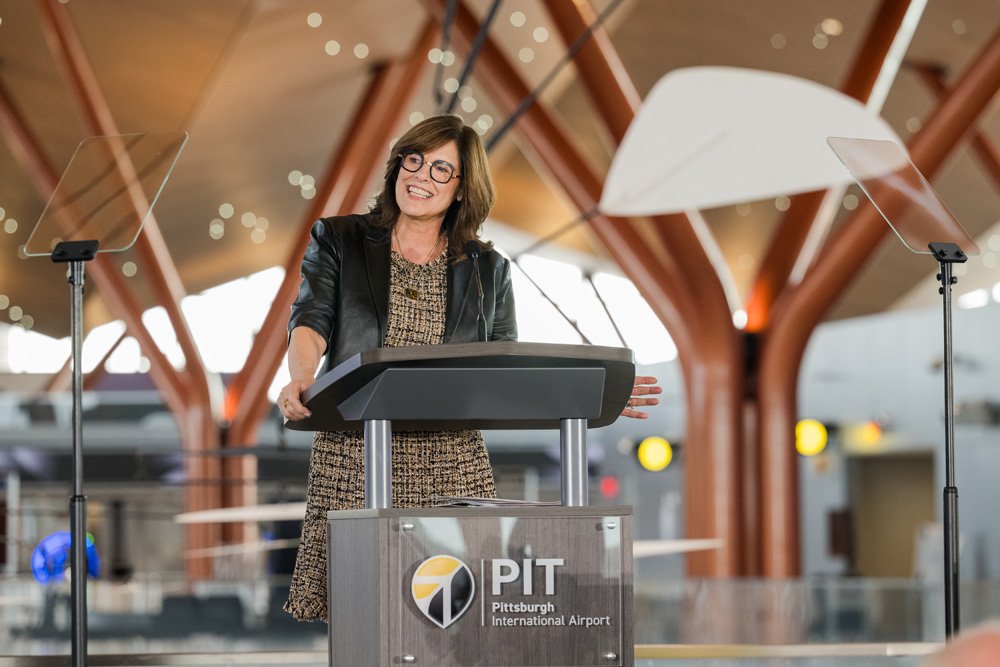
“The building design was always aspirational. It was meant and designed to work for everyone, for actual people who travel through and work in an airport,” enthused airport CEO Christina Cassotis.
“But the building itself, if you look at it now, I think is actually inspirational. Being in this space feels good, and that’s a pretty big statement for an airport today.”
The ceremony featured remarks from Cassotis and local, state and federally elected officials, including US Sentor Dave McCormick; Allegheny County executive Sara Innamorato; Southwestern Pennsylvania Commission executive director and former Allegheny County executive, Rich Fitzgerald; Governor Josh Shapiro; and Allegheny County Council president, Pat Catena.
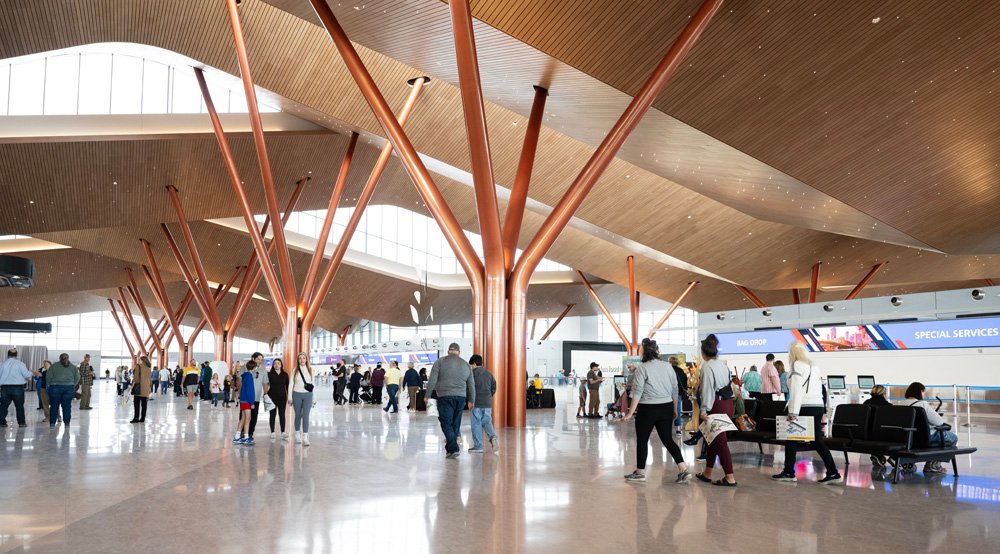
It was part of an action-packed Saturday at PIT’s new terminal that included the airport’s Community Open House presented by FNB and PNC.
The Ribbon Cutting and Community Open House were the latest in a series of events in preparation of the new terminal opening to the public later this fall.
The airport previously hosted a Family and Friends Open House with airport staff, held its first public trial with 300 guests in September, and hosted a gala on October 3 featuring more than 700 attendees. PIT will soon host its second public trial that is expected to include 2,500 participants.
Leaders attending Saturday’s ceremony recognised the extensive airline, government and community partnerships—private and public—that were essential to the project’s success from start to finish.
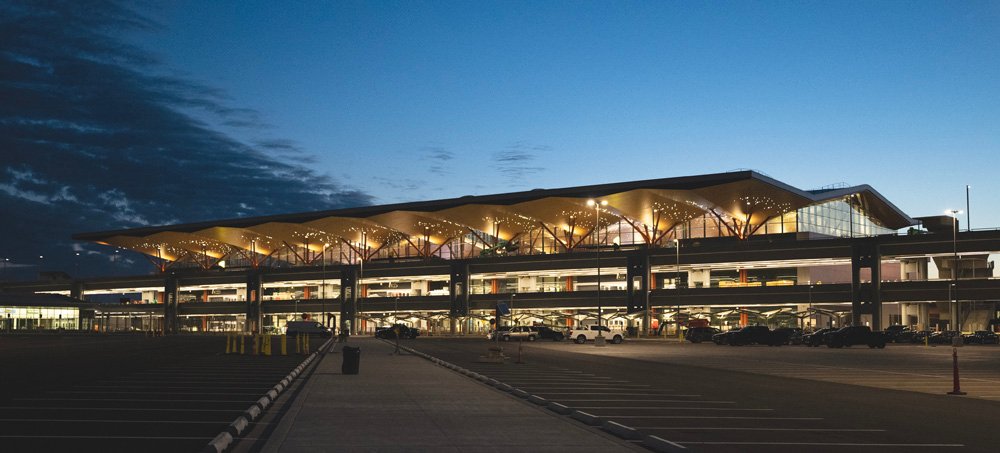
“Today marks more than just the unveiling of a beautiful [terminal]—it’s a celebration of what can be accomplished by working together with vision and determination,” said McCormick.
The project, which broke ground in 2021, was backed through unanimous support of PIT’s airline partners, which are covering majority of the $1.7 billion cost. No local tax dollars were used to fund the project.
The new terminal is the centrepiece of PIT’s transition from a hub connecting passengers from around the country to an origin-and-destination (O&D) airport tailored to better serve the Pittsburgh market.
Rather than being a hub with one dominant carrier, PIT has leveraged its airline relationships to diversify its air service portfolio by adding a plethora of legacy, low-cost and ultra-low-cost carriers to align with its O&D strategy.
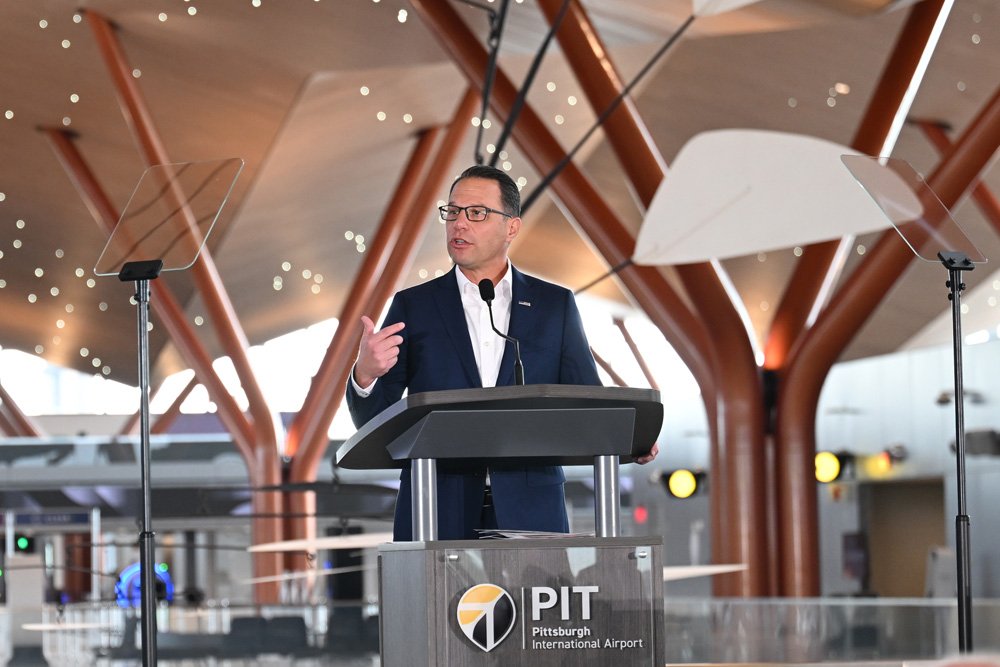
In the past decade, the airport has increased its nonstop destination network from 36 destinations to 62 and expanded its airline count from seven carriers to 15.
PIT’s air service expansion, coupled with the new terminal that is better designed for Pittsburghers starting and ending their passenger journey, is essential to driving further economic growth in the Pittsburgh region, officials said.
“Western Pennsylvania is growing – and it’s no surprise that airlines are adding new flights,” said Shapiro, noting recent additions by American Airlines to Los Angeles, JetBlue to New York-JFK and Fort Lauderdale, Delta Air Lines to Salt Lake City and Southwest expanding to 21 routes next summer.
“Passengers coming from and going to all of those destinations will have a better experience thanks to this new terminal.”
Inside and out, the terminal includes features that are visually striking and functionally innovative.
The terminal is designed to capture the essence of the Pittsburgh region. The rolling roofline mimics the region’s hills, and its structural tree columns and terrazzo flooring’s intricate leaf patterns, created by artist Clayton Merrell, reflect the region’s forests.
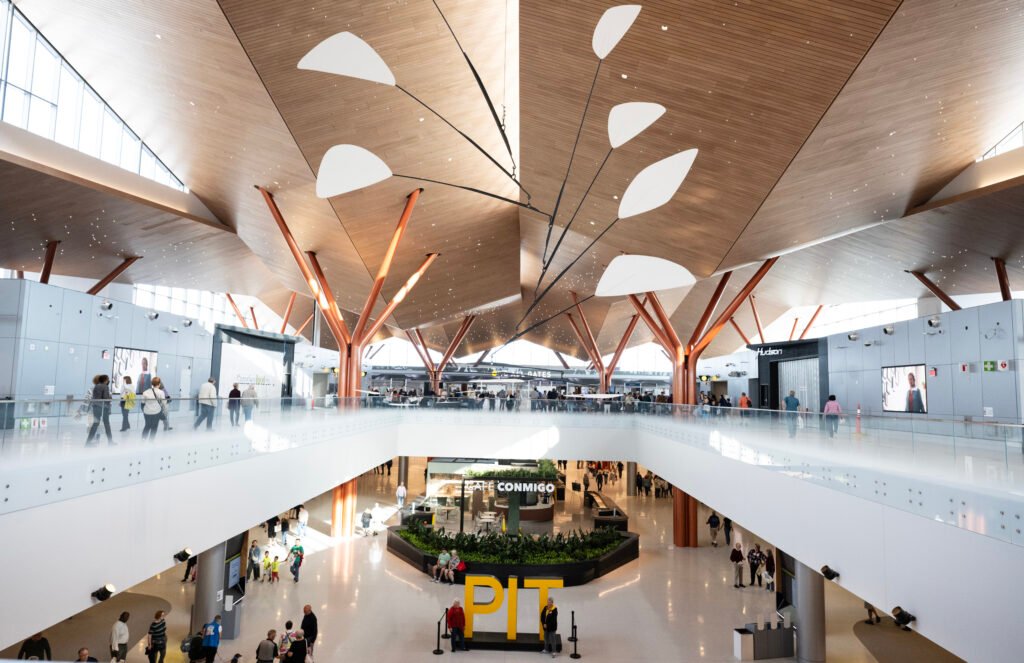
Perhaps most striking is the terminal’s constellation lighting – featuring more than 4,000 lights – that emulates the night sky, creating a spectacular effect that is visible inside and outside of the building.
Unique among US airports, the terminal includes four outdoor terraces— two pre-security and two post-security —giving travellers a chance to enjoy fresh air during their journey.
The new terminal has already delivered economic results to the region via jobs during its construction.
Throughout the project, over 14,300 jobs were created with an estimated impact of $2.5 billion in economic activity and over $1 billion in direct labor income.
Over 90% of the terminal’s labor and supplies were locally sourced, including the steel that supports its foundation.
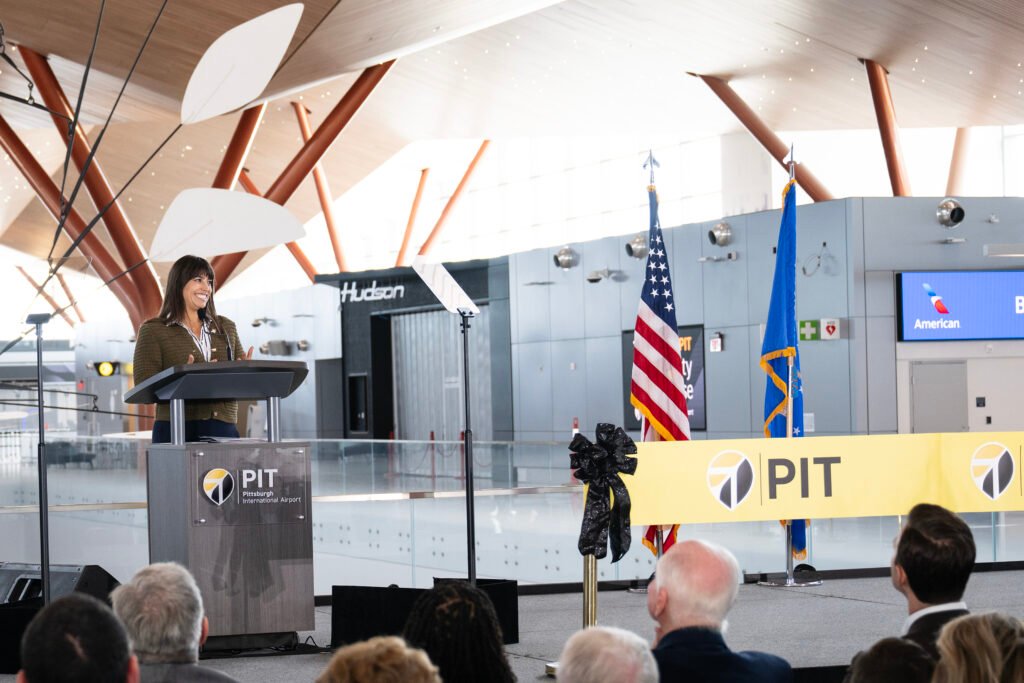
“This is an airport for Pittsburghers, built by Pittsburghers, with Pittsburghers on full display” Innamorato said.
“The possibilities and potential are as endless as the opportunities that the airport has capitalised on to get us here today. We have an airport that reflects, connects and serves the community – and that will continue to fill that role for generations to come.”
Cassotis added: “This isn’t a ‘let’s get going’ moment. This is a ‘let’s keep working together’ moment, because when we do work together, when we work on the things that we have in common, we’re seeing it here today.
“The things we agree upon, this community makes great things happen.”







